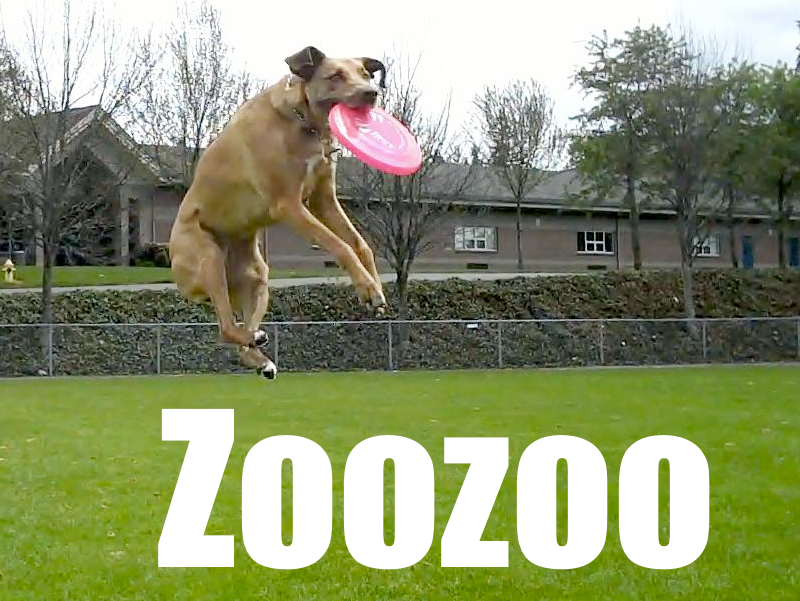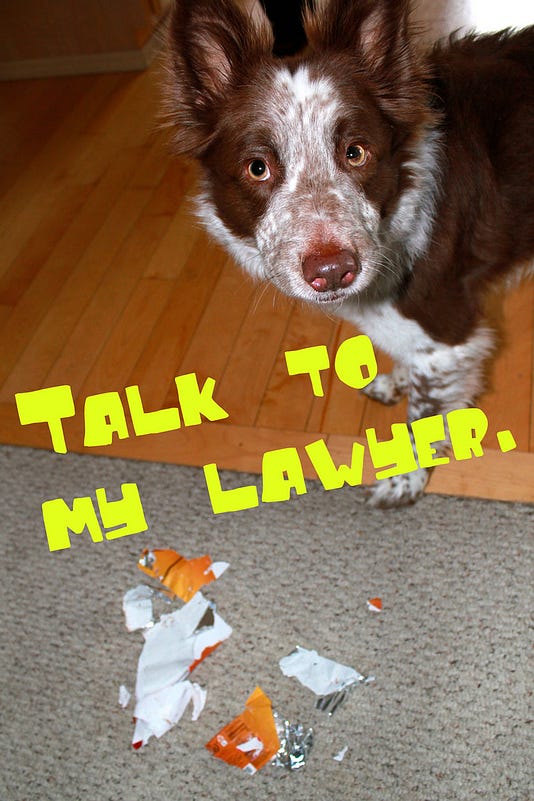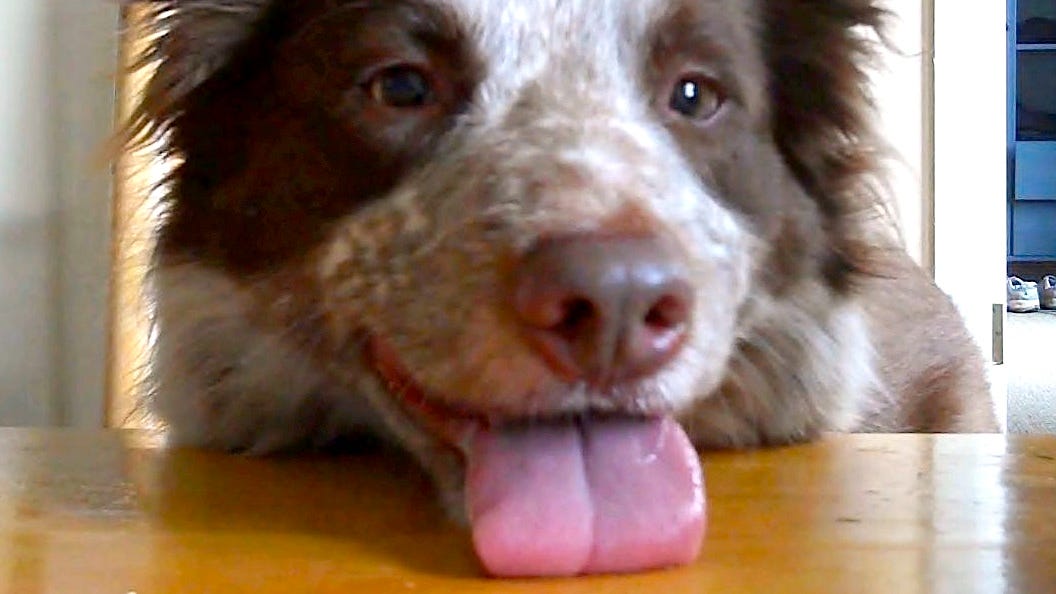DOG TRUSTS — SMOOTH MOVE OR DUMB DOG TRICK?

Tabloid headlines cry out about eccentric millionaires “leaving it all” to their pet poodle.
Gunther IV, the German Shepherd Dog, is worth $350 million (US), right? Wrong. Learn one hard fact right here — dogs generally cannot own or possess property in their own right. Therefore, common sense estate planning concepts — such as trusts and planned giving — are necessary tools for mindful pet owners.
Please consider what will happen to your dog if you go Rainbow Bridge before it does.
ECCENTRIC EXCESS OR APPROPRIATE PLANNING?
This article will focus primarily on dog trusts. Yes, these are appropriate estate planning techniques for pets as well as humans. This article will also list a veritable compendium of good and bad examples of canine trusts and bequests through history, ranging from the humorous to the outright malicious.
While we’re at it, let’s salute a few champions of canine-related philanthropy. Woof and away we go.
WHAT WOULD OPRAH DO?
Jesus didn’t own a dog. So we will have to look at the next best thing — Oprah!
No one is shocked when a mega-star like Oprah Winfrey showers her dogs with praise and top-notch everything. Photos show Oprah’s dogs snuggled together in her bed, swimming in her pool and enjoying their mistress’s mansion, grounds and airplanes. Personally, I applaud Ms. Winfrey for her outright dog love.
Winfrey has owned more than 20 dogs in her adult life, and reportedly once owned eleven dogs at a time. That’s a dog lover, one who will do whatever it takes to care for her animals.
Yet America freaked in 2007 when Woman’s Day Magazine reported that Winfrey had established a $30 million trust to ensure care for her dogs should the star precede them in death. Oprah’s camp at one point denied this report (probably because the facts were badly bent by the tabloids), but astonished-sounding headlines confounded America with another big bowser bequest story.
PETS ARE GENERALLY CONSIDERED PROPERTY
When it comes to rights and protections, pets have few. In all of the United States, the family dog is the property of its owners. So, technically, your dog cannot own or inherit anything, because your dog is, itself, property. Maybe it’s different in Italy, where Gunther IV is from, but I doubt it.
A dog’s life after you die is complicated by the fact that a dog cannot speak (advocate, negotiate or contract) on its own behalf. Basically, your dog may go to the pound and/or be euthanized if you die unless you have a provision in your will appointing and authorizing a person or agency that is ready to care for your pet should you die.
BANFIELD CHARITABLE TRUST
The Banfeild Charitable Trust, located in Portland, Oregon has a stated mission to educate hospices about the bond people have with their pets. They help homeless people feed their dogs. They help find foster homes for animals who have lost their owners.

This is an important humanitarian issue. Homeless or solitary people should not be forced to abandon pets when they enter hospice care.
However, you might be able to arrange an end of life foster home for your pets through an agency such as the Banfield Charitable Trust or an affiliated fosters. This is can be accomplished in a very simple trust. When the animal passes, one might appoint the fostering agency or a charity to receive the remaining trust funds.
DORIS DUKE AND THE ROBERT THE MUTT
Doris Duke lead a charmed and privileged life. She was classy to the end, providing well for her pets. She did it right. Ms. Duke had many interests and she was a renowned animal lover and philanthropist. She favored shelter and rescue dogs.
Duke was the only child of a fabulously wealthy hydroelectric and tobacco tycoon, James Buchanan Duke. She was often referred to as the world’s richest girl. In spite of her wealth, Duke sought adventure and knowledge. She was the first white woman to surf competitively in Hawaii, surfing under the tutelage of Duke Kahanamoku, a five time Olympic swimming medalist. Later she worked as a journalist for Harpers Bizarre out of their Paris bureau.
In 1992 she died at age 81. In her will was allocated the sum of $100,000 in trust for each of her pets, Robert the mutt, Rodeo the Shar Pei, and others. Ms. Duke made headlines in her death, as the settlement of her trust was the first animal trust settled in the state of New York. But her estate was upheld as she had it written. Her will was done from the grave. This is how it is supposed to work.

There are many other examples, however, of people who left their fortunes, or attempted to leave their fortunes, to their dogs. Not all of them had altruistic or humanitarian motivations when making the bequest.
LEONA HELMSLEY AND A LITTLE DOG NAMED TROUBLE
In some instances elderly individuals might lack a family member or friend whom they would trust to care for their pet. Perhaps the pet owner was arrogant and alienated others. Sound like anyone you know?
Leona Helmsley, the self-proclaimed Queen of New York’s Palace Hotel (aka “the Queen of Mean”), died in 2007 at the age of 87, leaving an estate valued in the billions of dollars. She left $12 million to her dog, a maltese named Trouble. She left the sum of $6 million to be split among two of her four grandchildren and disinherited the two other grandchildren with the explanation that it was “for reasons they well know.” During her life Helmsley was convicted of tax evasion and was quoted as saying that only “the little people pay taxes.”
The twelve million dollars for Trouble was later reduced by legal challenge to $2 million. Helmsley also willed several million dollars to her brother, Alvin Rosenthal, on the condition that he take care of Trouble after Helmsley passed.
The public reacted very negatively to Ms. Helmsely’s will. Trouble the millionaire Maltese received death threats. His private security bill was around $100,000 per year. When Trouble died at age 12, she was not buried next to Ms. Helmsley, as Helmsley had directed. Health regulations forbade it.
Helmsley was truly, filthy rich and had access to the best lawyers that money could buy. She probably received quality legal advice, but chose to ignore it. Instead, she editorialized from the grave, which is not a good idea. It is also generally considered bad legal drafting to disinherit someone entirely or to be vague to any degree as to one’s intent.
PHILANTHROPY BEFORE THE GRAVE
It should be said that the Helmsley Charitable Trust, where most of Leona’s money went, is presently worth more than $4 billion. The Trust makes grants to non-profit agencies throughout the world.
Other philanthropists turn their attention specifically to animal causes. Some are specifically drawn to canine causes. Below are some noteworthy dog lovers.
BOB BARKER — ANIMAL ACTIVIST AND PHILANTHROPIST

Television game show host Bob Barker credited his wife, Dorothy Jo, as being ahead of her time on animal issues. Barker followed his wife’s lead, becoming a vegetarian in 1979. As host of the television show, The Price is Right, Barker would end the show with the statement, “Help control the pet population. Have your pets spayed or neutered.”
But Barker showed his charactor by action as well as words. He became active in animal concerns after the death of his wife in 1981. He felt compelled to continue the work Dorothy Jo had started.
Barker started the DJ&T Foundation, which was named after his wife and mother, and he donated millions of his own dollars to programs that supported spay and neuter programs, animal rescues and shelters, and dog parks.
Barker’s philanthropic efforts included a $1 million gift to Columbia Law School to fund animal rights law and an environmental law clinic. In 2010 Barker gave $2.5 million to PETA, and the money was used to construct PETA’s Los Angeles offices. PETA thereafter named their new building after Mr. Barker.
Barker also contributed $5 million to the Sea Shepherd Conservation Society. The $5 million was used to secretly outfit a boat that was used to protect oceanic wildlife, most noticeably in a television show that detailed efforts to stop Japanese whale hunting in waters surrounding the South Pole of the Earth.

BETTY WHITE — A PILLAR SUPPORTING THE LOS ANGELES ZOO
Like Barker, White cemented her reputation for supporting animal-welfare agencies in the 1970’s. Since 1971 she has served on the board of the Morris Animal Foundation. Since 1972 White has served on the board of the Los Angeles Zoo Association. In the 1970’s White produced and hosted a television show called, “The Pet Set.” In the show White interviewed television and movie stars, showing the stars at home with their pets.
Ms. White is known for being generous with her money as well as her time. She makes frequent philanthropic gifts to the Los Angeles Zoo and other animal-related entities. During her lifetime, she has given hundreds of thousands of dollars, if not millions, to “the animals.”

It is noteworthy when people give so generously during their lives. Barker and White exemplify this.
MADDIE’S FUND
For the mindful philanthropist, benevolence is a cocktail best sipped before the grave. It is important, however, for anyone considering a charitable gift to consult with their financial planner and an attorney.
Maddie’s Fund advocates for and supports no-kill animal shelters. The fund has received over $300 million from benefactors Dave and Cheryl Duffield, who earned hundreds of millions of dollars in the software industry. The fund was created to honor the Duffield’s mini Schnauzer, Maddie, who died of cancer in 1997. The Duffields enjoyed the unconditional love of their pet, who lived with them during years while Dave and Cheryl were working and building wealth. The Duffields have appeared on numerous wealthy persons lists. Their donative instincts, however, seem to favor animals.

PETA AND PAMELA
Hollywood animal-loving actress Pamela Anderson, is an honorary director of PETA. Ms. Anderson personally supports a variety of charities, and she was an animal activist even before she achieved fame and fortune in the television show, Baywatch.
GUNTHER IV AND THE GLOBAL REVOLUTION — $300 MILLION
When German Countess Karlotta Liebenstein died in 1991, she left her dog, Gunther III, approximately $65 million. Gunther did not live to enjoy his inheritance. He died a short time later. Gunther’s son, Gunther IV, also a dog, then inherited his dog-father’s fortune. In the years following the bequest, the funds held in trust for Gunther were quadrupled by Gunther’s investment advisors.
Media outlets have questioned whether the Countess and the dog ever existed. Yet no evidence exists to disprove the story. The dog, Gunther IV, has made personal appearances and seems to split his time between a $5 million mansion (formerly entertainer Madonna’s home) in Miami Beach and other resort-like estates and vacation homes.
If the Gunther story is a publicity stunt, then it is an elaborate and expensive one. What cannot be disputed is that the money seems to exist and that the Gunther Corporation did purchase Madonna’s Miami mansion. Her camp confirmed that much.

Such speculation is due to the gargantuan size of the estate and the unusual provisions of the alleged will. The will provided for Gunther to have 5 human companions, who were specially selected based upon five factors — spectacularity, sexuality, wealth, notoriety and mobility. These human companions are called The Burgundians. They performed in a Miami stage show in 1999, and an Italian television show further popularized the Burgundians through a program that proposed an alternative lifestyle based upon breeding humans with the same scientific aplomb with which German Shepherds are bred.
Don’t laugh. The dog also “owns” a professional soccer team. Other dogs have had to work for their money.
MOOSE — THE DOG WITH A JOB
Moose, the Jack Russel Terrier who starred in the televison show, “Frazier,” earned (for his owner) approximately $10,000 per episode while he was an animal actor. It is estimated that Moose’s estate was valued at more than $3 million when Moose died in 2006. To this very day Moose is a fine example of a hard working, self-made dog.
MILLION DOLLAR DOG HOUSE FOR FLOSSIE THE FIRE ALARM
Flossie, a dog owned by Drew Barrymore and then-husband Tom Green, barked and scratched at her owners’ bedroom door, alerting the stars to a fire and saving their lives. In thanks, Barrymore gifted her home to Flossie. The home has been valued at around $3 million. When last researched, Ms. Barrymore and Flossie continued to share the home. Flossie is a rescue-dog that Barrymore obtained at a flea market.
TOBY — PAMPERED POODLE OR BIGGEST LOSER?
In 1931 New Yorker Ella Wendel left her poodle a fortune valued at $30 million. A succession of poodle heirs have followed, leaving the current trust recipient, Toby Rimes (yes, also a poodle), the beneficiary of a continuing trust currently valued at more than $90 million. Gee, how lucky could a poodle be, huh?
The alternative second theory is that Toby, the poodle, did not inherit a dime. Even though Ella Wendel did, in fact, have a fortune valued at greater than $30 million dollars in 1931.

The Wendels were a New York family that became fantastically wealthy in businesses involving furs and real estate. The family consisted of Ella, her six sisters and one brother. The brother ran the family business. The seven sisters lived out their lives as spinsters, cuddling lap dogs rather than boyfriends. The brother was overbearing and controlled his sisters’ lives. Rumors were that he did not want his sisters to marry because marriage would divide his business interests. By 1910 the family mansion in midtown manhattan had become surrounded by skyscrapers. One by one the sisters and the brother died, leaving Ella Wendel alone in the house with the last of a succession of poodles named Toby.
Ella was sometimes seen in her backyard, exercising Toby. Office workers would look out their windows to see a tiny, frail woman dressed in the drab clothing of a bygone era. And Toby the Poodle allegedly did not inherit a dime, as it is believed that he died in poor health a few months after his precious caregiver.
There are no known photographs of Toby.

ANIMALS SURRENDERED AFTER OWNER’S DEATH
Every day thousands of pets are surrendered to animal rescues and shelters. According to the American Humane Society website, approximately 800 pets were orphaned by the September 11, 2001, terror attacks on the World Trade Center alone. Every year it is estimated that as many as 500,000 pets are orphaned each year by the death of their human caretakers.
An elderly person’s pet may be elderly itself, making the pet a less than ideal candidate for re-adoption, almost assuring that the pet will have difficulty finding another “forever home.”
This problem has been addressed by media outlets ranging from local newspapers to USA Today. However, rather than addressing this serious problem, the real headlines go to those few very wealthy pet owners who provide well for their pets.

NORA HARDWELL — ANIMAL LOVER, RECLUSIVE SPINSTER
In 2006 United Kingdom newspaper headlines announced that Tina and Kate, two collie mix dogs from England, inherited an estate valued at approximatley $1 million (US dollars). A reclusive secretary, Nora Hardwell had no human family members to whom she wanted to leave her estate to, and she considered her dogs as family and provided that her home, her money and her five acres of land near Bath be maintained for the dogs during their lifetime.
CONCHITA — THE $11 MILLION CHIHUAHUA
Miami Beach socialite Gail Posner, the daughter of American capitalist, Victor Posner (he invented the leveraged buyout and what is now known in business as “arbitrage”) left a $3 million trust and a home valued at $8 million to her Chihuahua, Conchita, and Conchita’s canine “sisters,” April Marie, a Maltese, and Lucia, a Yorkie. In an interview Ms. Posner gave to a newspaper in Miami, Ms. Posner elaborated on the level of care she provided to her dogs. Ms. Posner’s dogs were transported to weekly puppy spa treatments in a luxury SUV. Ms. Posner’s favorite dog, Conchita, accompanied Ms. Posner on her luncheon dates. Ms. Posner also treated her dogs to expensive gifts, such Cartier jewelry.
Ms. Posner’s son, Michael Carr, was left a paltry $1 million in his mother’s will. He subsequently commenced a lawsuit challenging the will and alleging that Ms. Posner’s staff had schemed to have the money left to the dog so that they could retain their jobs.
WELL HEELED BULL TERRIERS
Fashion designer Lee Alexander McQueen committed suicide at age 42, leaving only a note that said, “Take care of my dogs, sorry, I love you.”
McQueen owned three bull terriers, Minter, Callum and Juice, and he left behind an estate valued at $26 million. He also bequeathed tidy sums to the Battersea Dogs and Cats Home and the Blue Cross Animal Welfare Society. After the dogs passed, the trust funds were passed on to an assortment of animal charities.
A WELL REWARDED RETRIEVER
Brewery Heiress Diana Myburgh obtained Jasper, a retriever mix, from an animal rescue agency. She brought Jasper to live with her and her other dog, Jason, a whippet.
Ms. Myburgh cared for the two dogs until her death in 1995, at which time the dogs were found to be the beneficiaries of a trust that contained the majority of Myburgh’s assets and free run of her 1,236 acre estate that was valued at more than $1 million.
After Jason died, Jasper became the sole beneficiary of the trust and moved in with Myburgh’s former son in law, Sir Benjamin Slade, who fed Jasper tripe, the dog’s favorite food. Sir Slade angered other beneficiaries of the trust, who were waiting to inherit the fortune, when he announced his intent to have Jasper cloned. The human beneficiaries believed that the clone would delay distribution of the trust assets to the aforementioned humans.
THE FINAL FRONTIER
Majel Barret Roddenberry, widowed wife of Star Trek creator Gene Roddenberry, left a provision in her will that left $4 million in trust to her dogs. Concerned about the quality of care, Ms. Roddenberry included a provision that allocated another $1 million in trust for a loyal employee who would provide care for the dogs for the remainder of the dogs’ lives.
Sidney Altman, who made a fortune in the bathroom fixture industry, left a significant portion of his $6 million estate to his one true love, Samantha, a cocker spaniel. Mr. Altman’s long-time girlfriend was left the sum of $60,000 per year if she cared for the now-wealthy dog. The dog inherited Altman’s Beverly Hills Mansion and a sum of $350,000 in trust. The now-forlorn girlfriend filed suit challenging the will, arguing that a human being should not be treated as less than a dog. It is believed that Samantha was a cocker spaniel, although no photographs of Samantha are known to exist.

Quaker State Motor Oil heiress Eleanor Ritchey had few friends and as a child was very close to her mother. When her mother died, Eleanor turned her love toward her canine companions. Eleanor rescued dogs from the streets and created a private shelter for lost and neglected dogs. When Eleanor died she had 150 or more dogs in her shelter and approximately $12 million in assets. The dogs were cared for at the shelter until all the dogs eventually perished. The remainder of the funds were then gifted to Auburn University for the study and cure of canine diseases.
In 1909 Ann Dier had ammassed a fortune of $25,000 (roughly $500,000 in today dollars). Unfortunately, Ms. Dier’s husband shot and killed her. In her will Dier left her estate to a couple she had befriended, willing that at least most of the money be spent on her dog, Flossie. Some speculate that Ann knew her husband’s motives, and that she changed her will to spoil his evil plans.
SIT RIGHT BACK AND HEAR A TAIL …
Actress Natalie Shafer made her first fortune portraying Lovey Howell, the wife of Thurston Howell, III, on the 1960’s television show, “Giligan’s Island.” Ms. Shafer was once married, later divorced, and did not have children.
She invested her television-show money in real estate, making herself a multi-millionaire. Later in life Ms. Shafer lived with her Gilligan’s Island co-star, Dawn Wells (“Maryanne”).
It has been debated whether Shafer left her millions to her dog or to Ms. Well. Ms. Wells won’t dignify the question with a response. During her lifetime Ms. Shafer showed her humanitarian nature by funding the remodelling of a wing at Motion Pictures and Television Actors Hospital. Another bequest provided a $1.5 million to the Lillian Booth Elderly Actors’ Home.
ALL TO THE DOG

English university professor, Dr. Christine Gill, discovered after the death of her parents that their wills left their 287 acre North Yorkshire farm to the surviving spouse and after the death of both the farm became the property of the UK’s Royal Society for the Prevention of Cruelty to Animals. Doctor Gill sued to challenge the will, arguing that her father was a bully who forced her mother to agree to the terms of the will. Attempts at settlement were not successful and the matter became an all-or-nothing court battle. After four years of legal action, including a trial and appeal, the challenge was successful.
The estate was valued at approximately $3 million (in US dollars). Ms. Gill won and the animals lost.
This is another example of why a person should never be written out of a will entirely. It is easier to defend language that leaves someone $500 and an old watch, rather than defending language that disinherits a blood relative entirely.

(Mike McKenzie is a writer/songwriter residing in Portland, Oregon. Mr. McKenzie has been a professional disc dog performer for the past 15 years and is a founding member of the non-for-profit entity WOOFD2. Mr. McKenzie’s Youtube channel can be found at THIS LINK.)
All rights reserved (C) 2015 Mike McKenzie, Hippy Dippy Entertainment
No comments:
Post a Comment